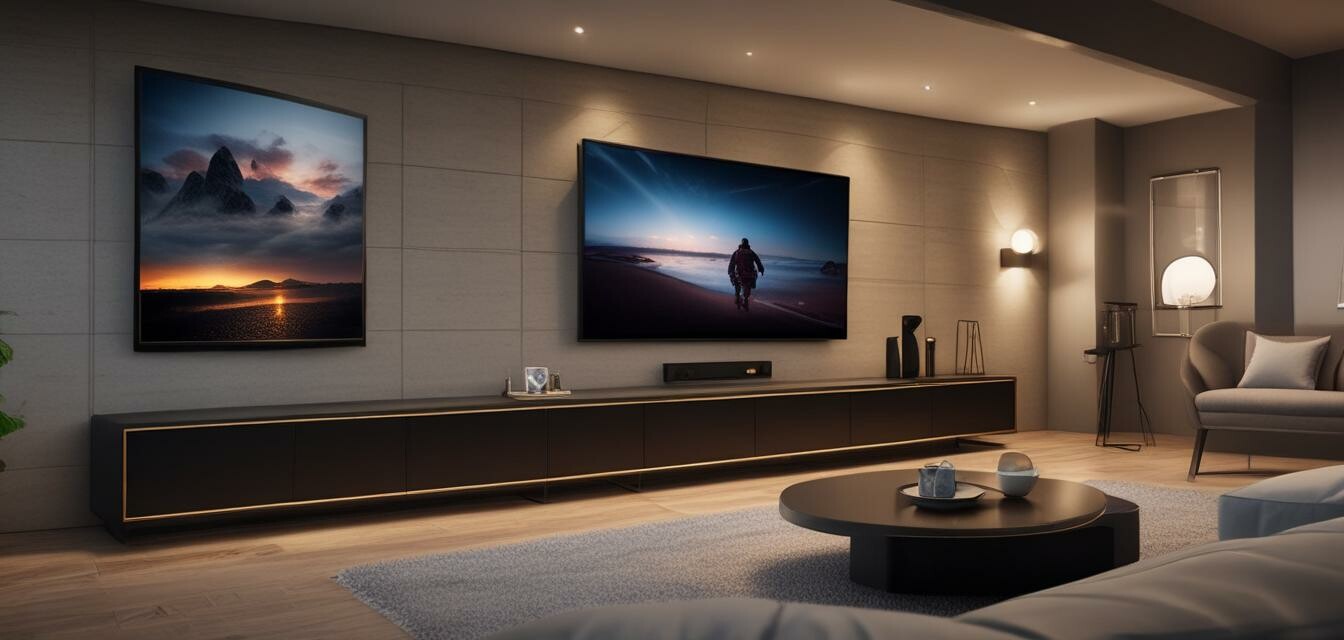
How to Connect Your Soundbar to a Home Theater System
Key Takeaways
- Connecting a soundbar to your home theater system enhances the audio experience.
- Know the different connection options: HDMI ARC, optical, and Bluetooth.
- Understand your soundbar and receiver settings for optimal performance.
- Regular updates and maintenance will keep your sound system performing at its best.
Integrating a soundbar into your home theater system can dramatically elevate your audio experience. Whether you’re watching movies, streaming music, or gaming, a soundbar can provide deep bass and improved clarity. This guide will walk you through the necessary steps to connect your soundbar to a home theater system seamlessly.
Understanding your soundbar and home theater system
Before diving into the connection process, it's essential to understand the components of your audio system. This includes your soundbar, receiver, and any other compatible devices that may interact with each other.
- Soundbar: A sleek audio device that enhances sound quality.
- Home Theater Receiver: The hub of your audio/video setup, managing incoming signals.
- Source Devices: Devices like Blu-ray players, gaming consoles, or streaming devices.
Connection Options
There are several ways to connect your soundbar to your home theater system. Here’s a breakdown of the most common methods:
| Connection Type | Description | Pros | Cons |
|---|---|---|---|
| HDMI ARC | Allows audio to transfer both ways through a single cable. |
|
|
| Optical Cable | Transmits audio as light signals. |
|
|
| Bluetooth | Wireless connection between devices. |
|
|
Steps to Connect Your Soundbar
1. Preparing Your Equipment
Gather your soundbar, home theater receiver, and necessary cables. Ensure everything is powered off before making connections.
2. Connecting via HDMI ARC
- Locate the HDMI ARC port on both your soundbar and receiver.
- Using an HDMI cable, connect the two devices.
- Turn on the soundbar and receiver.
- Select the HDMI ARC input on your receiver.
3. Connecting via Optical Cable
- Plug one end of the optical cable into the soundbar and the other into the receiver's digital audio output.
- Power on both devices.
- Choose the optical input on your receiver.
4. Connecting via Bluetooth
- Activate Bluetooth pairing mode on your soundbar.
- Using your home theater receiver, search for available Bluetooth devices.
- Select your soundbar from the list to connect.
Adjusting Settings for Optimal Performance
After connecting your soundbar, it’s important to check the settings for both your soundbar and receiver.
1. Check Audio Settings
- Ensure that your home theater receiver is set to the appropriate input source.
- Adjust sound profiles or sound modes in your soundbar to enhance audio quality.
2. Update Firmware
Check for any available updates for both your soundbar and receiver. Keeping firmware updated will ensure you have the latest features and improvements.
Troubleshooting Common Issues
If you encounter problems during the connection process, consider the following troubleshooting tips:
- Ensure all cables are properly connected.
- Power cycle your devices if they do not recognize each other.
- Consult the user manuals for specific troubleshooting steps related to your models.
Conclusion
Connecting your soundbar to a home theater system can greatly enhance your overall audio experience. By following the above steps, you can ensure a successful integration. Be sure to explore more tips on optimizing your sound system on our How-To Guides page for more detailed information.
Pros
- Improved sound quality for movies and music.
- Sleek design and minimal cable clutter.
- Versatile connectivity options for various setups.
Cons
- Some setups may require additional equipment.
- Wireless connections may experience latency.